Overload Protection
CEP7 Solid State Overload Relays
Advanced solid state motor protection
The 3rd generation CEP7 solid state overload relays offer superior motor protection with advanced features like:
- Selectable trip class and field-installable modules
- A wide current adjustment range of 5:1
- Robust, self-powered design with mechanical and electrical mounting
- Self-sealed latching mechanism
- Single- and three-phase compatibility in same device allows for reduction in inventory SKUs
The basic concept of utilizing Application Specific Integrated Circuits (ASICs) results in an affordable solid state overload relay. This kind of versatility and accuracy was simply not possible with traditional bimetallic or eutectic alloy electromechanical overload relays. The CEP7 offers dramatically lower energy requirements that save money and reduce panel space. Check out these advanced features.
- Fewer Units Mean Greater Application Flexibility
The CEP7 is available in four models covering a wide range of application needs. This means less inventory and greater flexibility.
- CEP7-1EE is a Class 10 or 20 manual reset model available up to 100 amperes, which covers the most common horsepower motors and everyday applications.
- CEP7-1EF is a full-featured, selectable trip class (10, 15, 20 & 30) overload relay with provision for field-mountable modules to handle remote reset, ground fault and other functions previously available only in higher priced electronic overload relays. Manual reset or automatic reset can be selected with dip switches on the CEP7-1EE models.
- CEP7-1 Pass-Thru models are available in up to 100 amperes in both the EE and EF models. Power wires simply pass-thru the overload relay and internal CT's monitor current. The Pass-thru model is particular useful where directly mounting to a contactor is not practical due to space or layout.

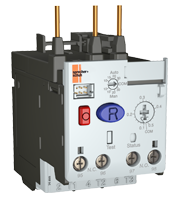
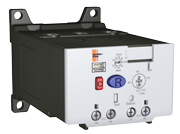
- Wide Current Adjustment Range
Thermal (or bimetallic) overload relays typically have a small current adjustment range of 1.5:1, meaning the maximum setting is 1.5 times the lowest setting. The first generation of CEP7 introduced a 3.2:1 adjustment ratio. Sprecher + Schuh's second and third generation CEP7 overload, with an adjustment range of 5:1, dramatically reduces the number of on-hand units required to cover the full range of current settings up to 800 amperes.

- Field Installable Modules Extend Product Options
CEP7 Modules offer additional features when used in conjunction with a CEP7-1EF overload. A range of special reset and communication options are covered.
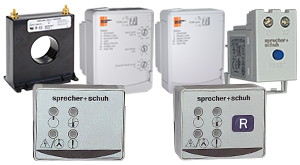
- Intelli-Button Remote Indication Device
The CEP7-ERID/CEP7-1ERIDN Remote Indication Device, or Intelli-button, mounts on the front of the control panel. The Intelli-button connects to a CEP7 module to provide convenient, remote notifications of the fault condition, as well as easy accessibility to reset the overload relay. The compact module is Type 4/4X/12/13 IP 65/66 rated and takes very little room on the front of a panel, fitting snuggly in a standard 22.5 mm cut-out. The Intelli-button allows you to safely identify the reason for fault condition and reset without opening the panel door.

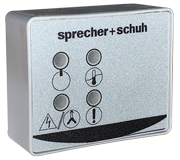
- Additional Feature Details
Robust Design
The newest CEP7 is the third generation and is redesigned to physically extend to the backpan, aligning the mounting of the overload with the corresponding contactor. Further, the mechanical attachment and direct electrical connection to the contactor provides a strong mounting. This means less damage during shipping and field wire installation.
The bipolar latching relay which controls the normally-closed trip contacts and normally-open alarm circuit contacts is self-enclosed, insulating the electro-magnet and shielding against airborne metal particles and other environmental debris. This CEP7 has been tested to operate in -4° C to 60° C (-4°F to 140°F) and withstand 3G of vibration or 30G of shock on a mountain as high as 2000m or in a jungle with 95% humidity. Reliability under every conceivable environmental condition is built into the design of the CEP7 electronic overload relay.
Selectable tripping class
With today’s lighter T-frame motors, Class 10 overload relays (relays that trip within 10 seconds of a locked rotor condition) have become the industry standard.
If your application requires a longer motor run-up time, the CEP7-1 has DIP-switches providing selectable trip classes; of 10 or 20 on CEP7-1EE and 10, 15 20 or 30 seconds on CEP7-1EF models. This enables you to closely match the trip class with the run-up time of the motor.
Choice of reset options
Most industrial applications call for an overload relay that must be manually reset in the event of a trip. This permits the cause of the overload to be identified before the motor is restarted. In specialized cases, however, such as rooftop AC units or where restarting the motor will not harm people or equipment, automatic reset may be desired. CEP7-1EE overload relays come with manual reset for cost economy, while the CEP7-1EF models have reset modes for manual or automatic.
Superior phase failure protection
The CEP7’s on-board electronics constantly monitor all three phases. If the ASIC board senses that one phase is lost during a steady state running condition on a fully loaded motor, it will trigger in 3 seconds. If a single phase condition is present during starting, the CEP7 will trip within 8 seconds (for a motor >80% loaded). These times are much faster than any thermal bimetallic overload relay. In addition, CEP7 overload relays detect a 50% phase imbalance in the same way as a phase loss.
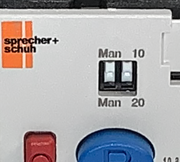
These superior features and options make the CEP7 Solid State Overload Relay your best choice in motor protection.

